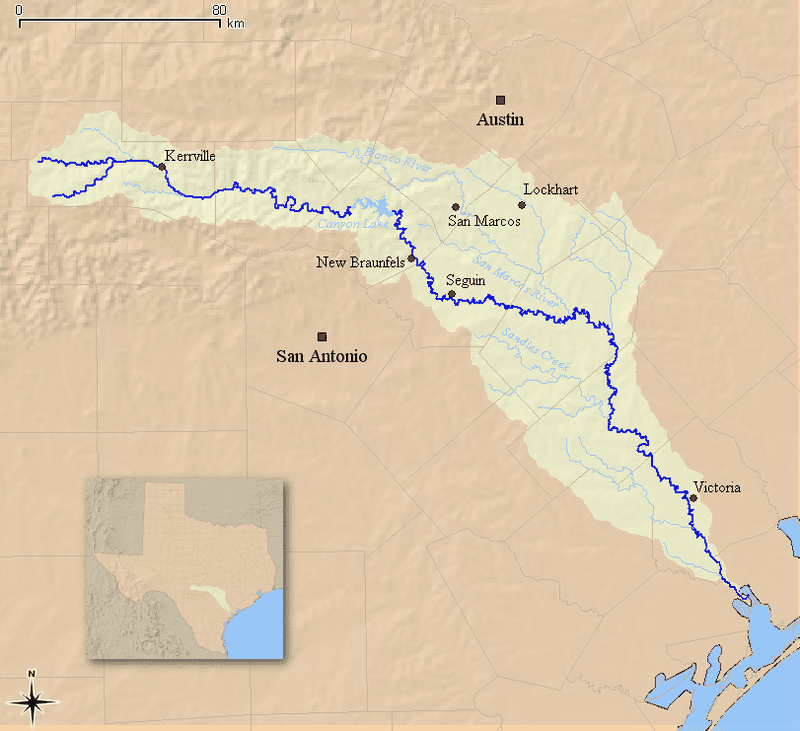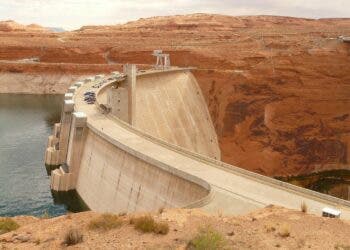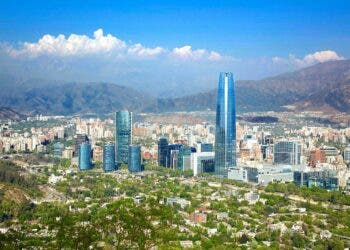Vidal Mendoza, a U.S. Geological Survey hydrologic technician, has been spending his past Tuesday scanning the upper Guadalupe River, looking for the right spot to measure the flow of the water.
Perhaps more accurately, Mendoza has been spending his past Tuesday on a hot, mostly dry riverbed searching where the river should have been.

Image via wikipedia
The Guadalupe river has been steadily going dry the last few years, this being the third time in the last five years that stretches of the river above Canyon Lake have turned to a series of shallow, standing pools, conditions not seen in the area for five decades now.
“This is what you call dry,” said Mendoza, who has worked for the USGS for 25 years. “I don’t think I’ve ever seen it like this.”
Trudging along on the dry riverbed, looking for a trickle of running water so he could perform his measurements, the pools barely came up to the calves of his thigh-high waders. But the only movement that could be discerned along the surface were the zumm and zamm of bugs and a light breeze that sent ripples along the puddles.
Finally sighting a timid trickle of water, Mendoza placed his Flow Tracker into the water to pick up a reading, but the flow was so weak the device failed to pick up a measurement. Mendoza was left estimating how little water was passing by.
The historical median flow of the Guadalupe River at Spring Branch has a value of 78 cubic feet per second for August 13, but now that value was a flat zero. The water was stagnant and filthy, with a film glistening on top in the sun and plenty of muck clouding the few inches of water.
Nearby at Comfort, where the median flow for Aug. 13 is 58 cubic feet per second, there also was no flow. Some of the water heads underground, but very little is making it to Canyon Lake.
“For all intents and purposes, the river’s dry,” said Bill West, general manager of the Guadalupe-Blanco River Authority.
The local wildlife is taking the drought pretty harshly, and many animals have started relocating for a clean drink.
“I’m heartbroken,” said Leslee Hamilton, executive director of the Guadalupe River Park Conservancy, a nonprofit that runs educational and community programs along the bank of the river. “We’ve been seeing a great increase in the number of birds and wildlife in the area… The timing of this is just devastating.”
“Every stream is slowly going dry. But it’s tough to give names and numbers,” said Gordon Becker, a fisheries scientist with the Center for Ecosystem Management and Restoration. “The system is hopelessly inadequate.”
There are efforts being taken to ease the strain on the water supply. Besides limiting lawn watering to once weekly with a hand-held hose, the measures aimed at reducing groundwater consumption by 30 percent also prohibit its use to fill swimming pools or ponds. And restrictions are bound to get even harsher.
“The deeper you get into the drought, the worse it gets,” Matt Clifford, an attorney with Trout Unlimited, said recently. “It’s grim.”
Lowest aquifer levels since 2011
Monitoring wells used by Cow Creek show the Trinity Aquifer level is at its lowest point in a decade, said Micah Voulgaris, district general manager.
“It’s 2 feet lower than it was in 2011 and 30 feet lower than in 2007,” he said, citing the average elevation of 1172.9 feet above sea level of the 14 wells by which he has tracked the aquifer level since 2003.
Not surprisingly, the drop in the aquifer directly correlates to the absence of rainfall, said Voulgaris, noting only 16 inches of precipitation has been recorded in Kendall County this year.
The lack of rain, the falling water table and cessation of flow in the Guadalupe River factored into the decision Monday to enact Stage 3 restrictions, he said, one step shy of declaring a “drought emergency,” under which all watering of lawns is banned.

Image via mysanantonio
The aquifer level’s drop has left many well pumps in the area dry, forcing homeowners to hire someone to lower pumps. When pumps are lowered as far as they can, drillers are called to dig wells deeper.
“We’re very busy with ‘no water’ calls,” said Mel Vogt, secretary at H.W. Schwope and Sons Water Well Drilling in Boerne. “A lot of it is because people just won’t stop watering” their grass, she said.
Violators of the Cow Creek drought restrictions face a fine of up to $500 if they don’t heed the first warning, said Voulgaris, who prefers not to perform the duties of water cop.






